Este post também está disponível em:
Português
English
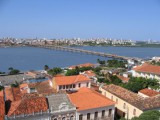
Saint Louis was the first name of São Luís, a city located in the western part of the island of the same name, which already hints at its origin.
In 1612, the year of the French invasion, the nobles Daniel de La Touche, lord of La Ravardière, and François de Rasilly, lord of Rasilly and Aunelles, landed here and named the place after King Louis XIII.
French rule over Saint Louis was short-lived: by 1615, it was back in Portuguese hands.
From then on, the capital of Maranhão would become more and more Lusitanian – a visible influence in several aspects, from the original layout, designed by engineer Francisco Frias de Mesquita (1578-1645), to the tiled facades of the buildings in the historic center.
See the videos about São Luís do Maranhão


São Luís do Maranhão - Centro Histórico

São Luís do Maranhão - Drone

São Luís do Maranhão - Guia de Turismo
Cut by rivers and with the sea surrounding it, São Luís has undergone a long and successful recovery plan, the government project Reviver.
The inauguration of the José Sarney Bridge in 1970 contributed to the urban revitalization by integrating the new part of the city, where there are modern buildings and luxurious hotels.
To walk around São Luís is to transit between these two sides, between the past and the present – the journey is made difficult, however, by poor signage and intense and confusing traffic, but still fascinating.
São Luís, which is 463 kilometers from Teresina, can be reached via the DR-135.
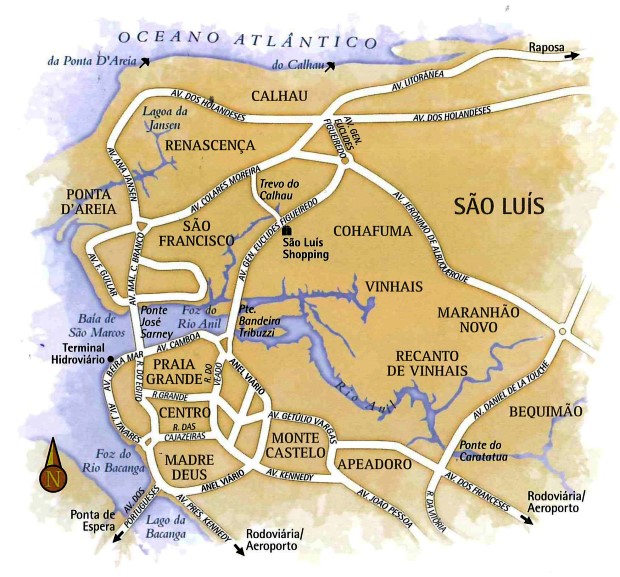
THE NEW SIDE OF SÃO LUÍS DO MARANHÃO
Extended over the Anil River, the José Sarney Bridge is the landmark of the beginning of the expansion of the “New São Luís”.
Without the attractions of the historic center, this part of the city stands out for its high concentration of skyscrapers, luxurious hotels, good restaurants and busy shopping centers.

After José Sarney, three other bridges were built that today connect the oldest part of the capital to the modern neighborhoods – Ponta d’Areia, São Francisco and Renascença, among others – where the elite of São Luís live.
The urban beaches do not attract much attention: the waters are dark and the tides are high. Still, Ponta d’Areia, São Marcos, Calhau – with its beautiful sunsets -, Caolho, Olho d’Água, do Meio and Araçaji are charming and have good attractions.
In the kiosks that dot the waterfront, you can taste delicious fresh fish and crabs.
Try the caranguejada at Base da Lenoca (“base” is the name by which typical food restaurants are called in Maranhão): eight crustaceans cooked on the stove, with special seasoning pulled in vinaigrette sauce and accompanied by rice with cracklings, baião-de-dois and pirão.
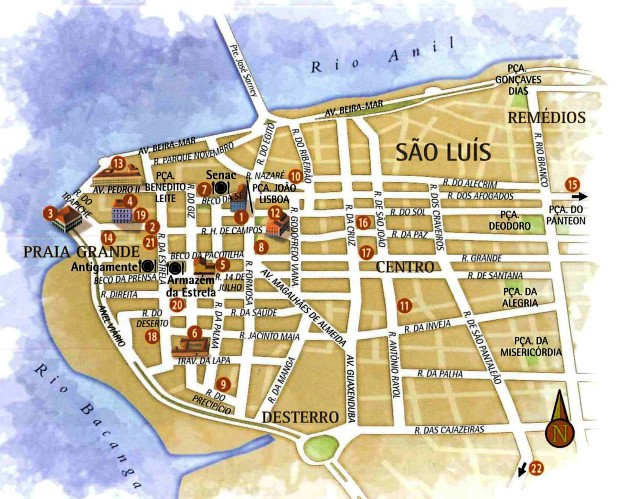
THE OLD SIDE OF SÃO LUÍS DO MARANHÃO
Recognized as one of the largest collections of Portuguese urban and architectural tradition in Brazil, the historic center of São LUÍS do MARANHÃO is
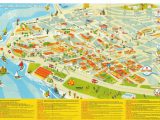
São Luís is more than an open-air museum: it is a living heritage, where people live, work, circulate.
Most of the museums, restaurants, bars and stores in the historic area of the capital are located near the Praia Grande market and the waterway terminal, between the old streets of Trapiche, Giz, Estrela and Portugal.
The best time to visit them is in the afternoon, when the main attractions are open – although the tiled facades of the colonial buildings alone are worth the walk.
WALK THROUGH THE HISTORICAL CENTER OF SÃO LUÍS
On this tour, the architecture is the highlight. In fact, these facades ended up inspiring architects from Lisbon in the 18th century.
Contrary to popular belief, the Portuguese living in Brazil first decorated the façades of their houses with azulejos and only later did the trend spread to Portugal.
The technique of using ceramics on the facades had a function beyond aesthetics, it served to minimize internal heat by reflecting sunlight. Portuguese tiles alone are 150 different models, mostly blue and white.
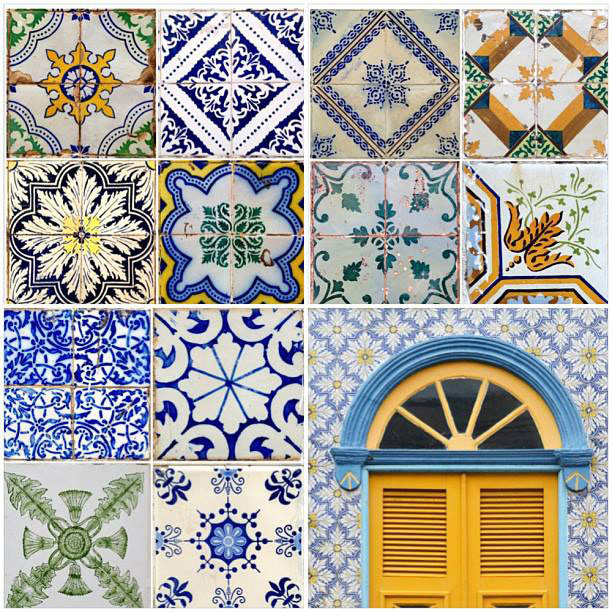
Common features of the houses are ceramic tiles and iron balconies. Huge windows and doors communicated the economic prosperity resulting from cotton in the 18th century.
Generally, merchants used the second floor to set up their trade and lived with their families on the upper floor.
A while later came decay and deterioration that only saw the prospect of improvement with the restoration process started in the late 70s. However, the way to recover them all is still undefined.
The walk usually starts at Praça Dom Pedro II, goes down the Catarina Mina staircase and falls at Rua Portugal, in Praia Grande.
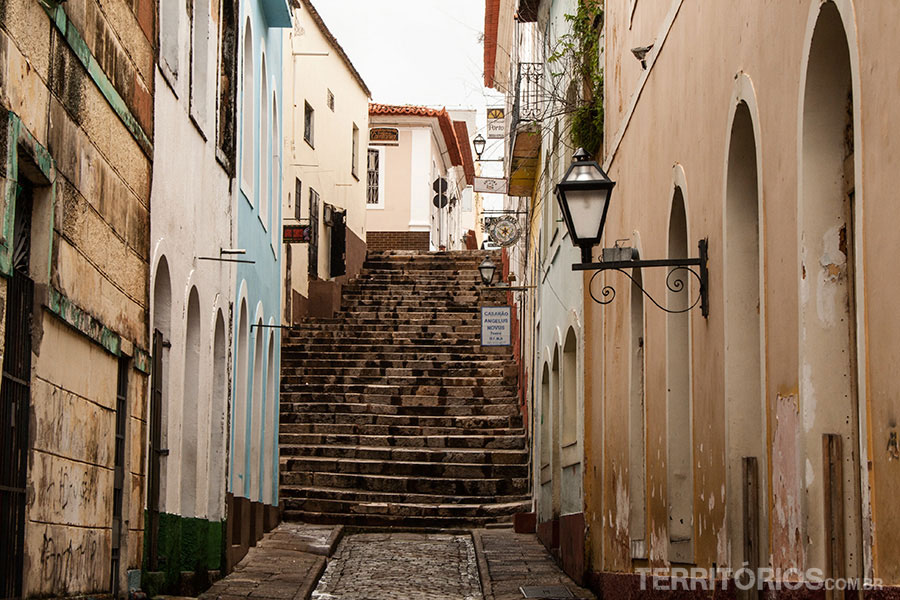
Further on make a stop at Largo do Comércio because of the bars and Casa das Tulhas, the place to taste and buy typical products.
If you do it on your own, when you reach Rua da Paz, head to Praça João Lisboa and from there to Rua do Sol, where the Arthur de Azevedo Theater is located.
Attraction with guided tour that still shows shows.
Straight ahead is Rua do Ribeirão which leads to Fonte do Ribeirão and its legends.
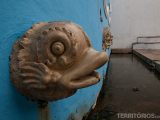
The Ribeirão Fountain (1796), with Christian and pagan symbols, was used to supply the city and still inspires legends and popular beliefs.
Among them is the legend of the sleeping snake that keeps growing in the underground tunnels of São Luís.
One day it will grow so big that its head will meet its tail and, when it does, it will wake up furious, spewing fire until it sinks the city.
Obviously, stories encouraged by the powerful of the city to avoid curious people in the underground where they used as a secret passage. The underground tunnels are said to connect the main churches of St. Louis.
1. SÃO LUÍS BUILDING
The large corner manor house, with three floors, is considered the largest building covered with colonial tiles in the country. Built in the 19th century, its interior was completely destroyed by fire in 1969.
In 1976, Caixa Econômica Federal restored the building and installed a branch on its premises. R. de Nazaré, corner with Rua do Egito.
2. PORTUGAL STREET
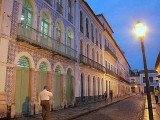
The two blocks full of tiled colonial buildings, bars and cafes make up the bohemian center of São Luís.
Rua Portugal, in São Luís, is the urban portrait of the 19th century, with sobrados with facades adorned with Portuguese tiles.
It gets even busier on Thursdays, when the street hosts the Dia de Festa event, a night of great music of various styles. When they perform in the city, stars and stars of MPB usually pass by.
3. HOUSE OF MARANHÃO
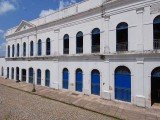
Housed in the former Customs House, a building dating from 1873, Casa do Maranhão exhibits objects related to the various manifestations of bumba-meu-boi.
On the first floor, a store sells souvenirs, while a big screen shows records of past parties and TV sets present landscapes of the state.
The upper floor dedicates a room to each rhythm – or accent, as the Maranhenses say – that the bumba-meu-boi assumes: instruments, clothing, etc.
There is also a room in which the legend that originated the tradition is explained, one for rehearsals and another in which the costumes used in the festivities are taught. The full visit takes about an hour. R. do Trapiche, s/n, Praia Grande.
4. NHOZINHO’S HOUSE
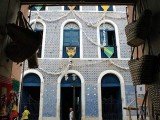
In this three-storey townhouse, with eaves covered in French tiles, visitors can learn about the way of life of both the Maranhão people who live inland and those on the coast.
On the first floor, a room shows objects used in farming, especially cotton – wooden pestles, seed grinders and looms – and products resulting from their handling, such as quilts and carpets; in another, there are pieces related to the coast, such as fishing traps and a canoe carved out of a single log.
The second floor houses the space destined for the craftsman who gives the place its name, Antonio Bruno Pinto Nogueira (1904-74), Nhozinho, born in Curupu, who gained fame making toys.
On the top floor, the indigenous room highlights material from eight ethnic groups that still live in the interior of Maranhão.
Outside, there are life-size replicas of common dwellings in the state, such as carnauba and mud houses. Guided tours. R. Portugal, 185, Praia Grande.
Meet the History of the House of Nhozinho in São Luís do Maranhão
5. CENTER OF POPULAR CULTURE DOMINGOS VIEIRA FILHO
Known as Casa da Festa, the space that honors the folklorist from Maranhão gathers material related to popular rites and folklore.
On the second floor, where the pieces that represent religious practice in the state are exhibited, the wing that presents the Casa das Minas stands out – a terreiro founded in the 19th century for the practice of tambor-de-mina, a cult of African origin similar to the Bahian candomblé.
On the second floor are the records of the Festa do Divino – with emphasis on Alcântara – and a space focused on another popular Afi-Brazilian festival, the tambor-de-crioula.
On the third floor are the pieces related to Christmas. There are guided tours with bilingual guides. R. do Giz, 205, Praia Grande.
6. CONVENTO DAS MERCÊS
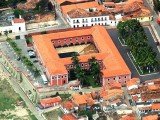
.
It was Father Antônio Vieira who inaugurated this building in 1654 to house the order of the Mercedarians, of Spanish origin.
Today it houses the Republican Memory Foundation, composed of the José Sarney Memorial – with documents and objects of the former president -, the Model Center for Research on Republican History, the Institute of Latin American Friendship and the Institute of Friendship of Portuguese Speaking Peoples. R. da Palma, 506, Center.
7. cathedral of the cathedral
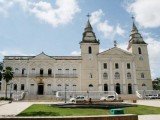
The church of Nossa Senhora da Vitória was built by Jesuits, probably with indigenous labor, and inaugurated in 1699. A succession of renovations transformed the original design: the current façade dates from 1922; the ceiling of the chancel was painted in the 1950s by João de Deus.
The altarpiece of the high altar, however, is a magnificent example of Baroque and worth a visit: the elaborate gilded woodwork, dating from the late 18th century, is considered by experts to be the best in the city. Listed by Iphan in 1954, the altarpiece was restored in the 1990s. Av. D. Pedro II, s/n, Historic Center.
8. and 9. OTHER CHURCHES
Present in the territory of Maranhão since the foundation of São Luís, Jesuits and other religious orders have built churches of great beauty in the city.
The church of Nossa Senhora do Carmo (pҫa. João Lisboa, 350, Centro) began to be built in 1627. It was sacked by the Dutch in 1641 and in 1894 passed into the hands of the Capuchins.
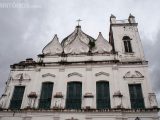
Its extraordinary façade and main door have been preserved and remain faithful to the original design.
It is believed that the Igreja do Desterro stands exactly on the site where the city’s first church was erected, destroyed during the Dutch invasion.
In 1893, residents collected donations and built it. In October 2007 it was closed for renovation (pҫa. Do Desterro, s/n, Praia Grande).
10 and 11. SOURCES
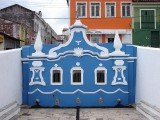
Built in 1796, the Ribeirão Fountain (Fonte do Ribeirão, s/n, Historic Center) has five streams of water, which come out of the mouths of frowns and sculptures representing fish and gods; in front, there is a patio lined with stonework.
The water from the Ribeirão fountain comes from a spring that used to supply many houses in the center and the ships docked in São Luís.
Its underground galleries cut through the historic center of São Luís.
According to legend, under one of them sleeps a gigantic serpent that will swallow the city the day it awakens.
Even older – it was inaugurated in 1640, taking advantage of the springs that had supplied the Portuguese troops during the fight against the French -, the poorly maintained Pedras fountain (Rua de São João, s/n, Historic Center), surrounded by a walled square, has imposing stone frowns from which water gushes.
12. ARTHUR DE AZEVEDO THEATRE
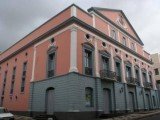
.
The idea of creating the Arthur de Azevedo Theater came about in 1815 on the initiative of two Portuguese merchants, Eleutério Lopes da Silva Varela and Estevão Gonçalves Braga.
This was the golden age of the cotton cycle, in which Maranhão was enriched by the export of this product and the city needed more cultural life.
Construction began in 1816 and on July 1, 1817, after a year of work, it was inaugurated.
It was initially called Teatro União, in honor of the creation of the United Kingdom of Portugal, Brazil and the Algarves (1815), the result of the Portuguese royal family’s arrival in Brazil.
This was the fourth theater in the history of São Luís, but it stood out for its comfort and size, with a capacity for 800 spectators. Its neoclassical style was also a novelty for the time.
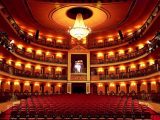
In 1852 it was renamed Teatro São Luiz and, in the 1920s, it gained its current name in honor of the great Maranhão playwright Artur de Azevedo (1855-1908).
In the twentieth century the theater was de-characterized and became a cinema, but is currently restored and in full operation.
13. PALACE OF THE LIONS
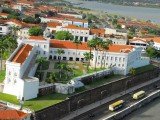
The Palace of the Lions marks the rise of the Portuguese colony in Maranhão.
The Palácio dos Leões, seat of the government of Maranhão, is one of the most imposing monuments in the country. Symbol of the living history of the people of Maranhão, the Palace attracts tourists from all over the world and makes the eyes of visitors shine, in the face of the grandeur of the work located in the Historic Center of the capital, São Luís.
The Palácio dos Leões has three thousand square meters of built area, divided into three wings: residential, administrative and visitation.
With neoclassical architecture, the monument has a collection of 1,300 objects, which are accessible to the public, in five noble halls with permanent exhibitions.
The collection includes works from the 15th to the 20th centuries, furniture, canvases, porcelain and sculptures, which express the power and wealth of the 17th century, when it was built.
The Palácio dos Leões dates back to 1612 and was built by the French who occupied the town and built Fort São Luís, right at the confluence of the Bacanga and Anil rivers.
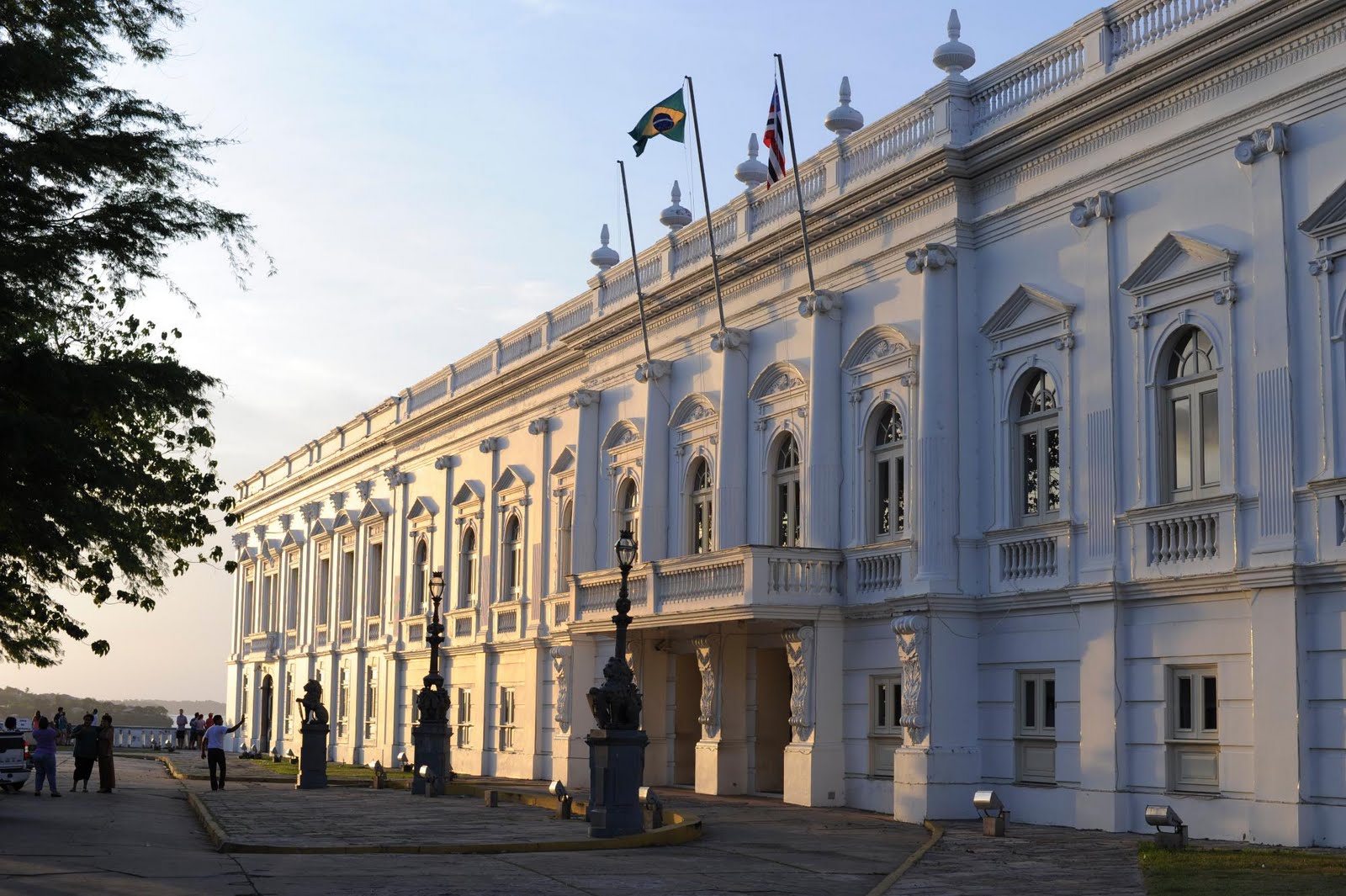
Palácio dos Leões, um dos maiores símbolos da cultura maranhense
The name was a tribute to the king of France, Louis IX. A few years later, the French were expelled and the Portuguese took over the local power, starting to influence the habits and culture of the people of Maranhão.
The heritage of the Portuguese colonizers is all over the Historic Center of São Luís.
The expansion of the city did not compromise the 17th century urban fabric and its original architectural ensemble. In 1974, the capital was listed by the National Historical and Artistic Heritage Institute (IPHAN) and inscribed as a World Heritage Site in 1997 by the United Nations Educational, Scientific and Cultural Organization (UNESCO).
The monument is one of the largest public buildings in the country and has undergone dozens of renovations and a major restoration. Today, it is an example of maintenance and preservation. Av. D. Pedro II, s/n , Historic Center.

14. Palácio de La Ravardière
The Palais de La Ravardière is the seat of the city hall of São Luís do Maranhão, Brazil. With origins in the 17th century, it is an important landmark of the city’s historic center, declared a UNESCO World Heritage Site.
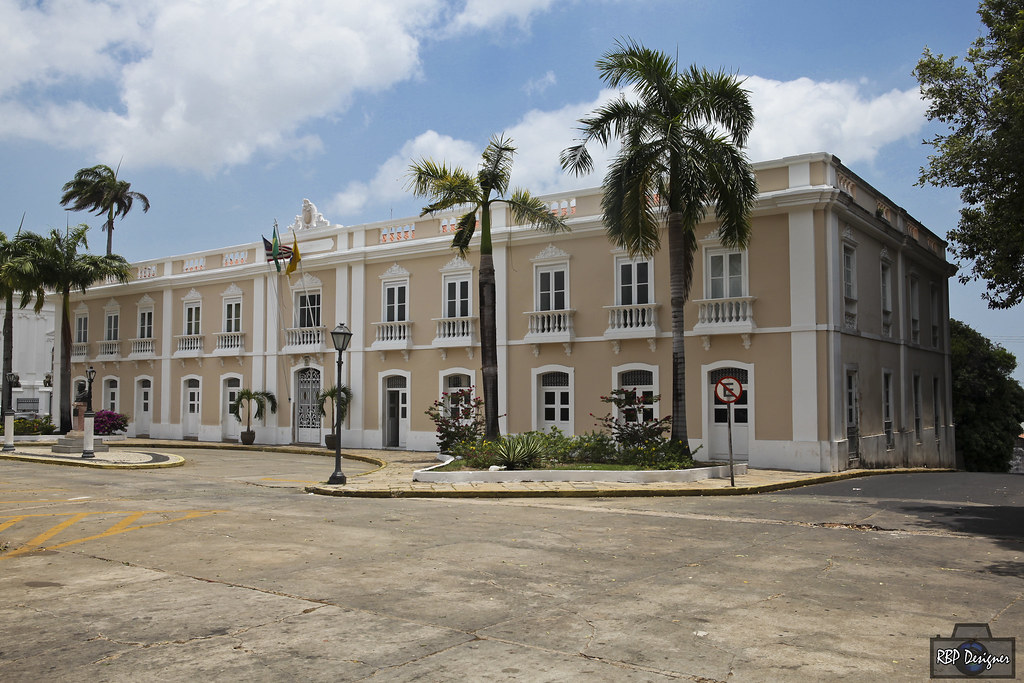
Around 1689 the São Luís Town Hall and Jail was built on the site, but the present palace is the result of several later renovations. The building has a symmetrical façade, decorated in the central part by a small pediment made of stucco.
The windows on the second floor have curved lintels, while those on the second floor have straight lintels with stuccoed decoration and balconies. Inside there is an elegant staircase leading to the second floor.
The Palace is named after Daniel de la Touche, lord of La Ravardière, who was considered the founder of the city in 1612. In front of the building is a bronze bust of the French captain, sculpted by Antão Bibiano Silva.
It is located on Avenida D. Pedro II, next to the Palácio dos Leões, seat of the state government.
15. CULTURAL CENTERS
European films, theater classes, art workshops. These are some of the attractions of the Odylo Costa Filho Creativity Center, a cultural space frequented by residents of São Luís.
The Ferreira Gullar Reading Room (College ramp, 200, Praia Grande) is also located there.
The Casa de Cultura Josué Montello is intended to serve the public in general and researchers in particular, in the fields of literature, history and performing arts (r. das Hortas, 327, Centro).
16. HISTORICAL AND ARTISTIC MUSEUM OF MARANHÃO
Dating from 1836, the Gomes de Sousa manor house was transformed into the Maranhão Historical and Artistic Museum in 1973.
Furniture, porcelain and crystal reconstitute the characteristic residential environments of the state in the 19th century. R. do Sol, 302, Center.
More Information HISTORICAL AND ARTISTIC MUSEUM OF MARANHÃO
17. MUSEUM OF SACRED ART
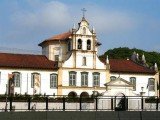
The Museum of Sacred Art, housed in a colonial manor on Rua de São João, has a valuable collection of imaginary and goldsmith pieces that tell the story of the Church in Maranhão.
The collection, which belongs in part to the Archdiocese of São Luís, consists of pieces from the 18th and 19th centuries in Mannerist, Rococo and Neoclassical styles. It includes everything from sculptures to objects used in religious celebrations, such as chalices and crucifixes.
18. SOLAR DOS VASCONCELOS HISTORICAL CENTRE
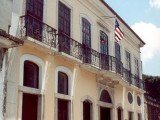
The mansion houses an exhibition of photos and objects that show the transformations that the Historic Center has undergone. It also features a collection of models and miniatures of typical boats used by the people of Maranhão.
A permanent exhibition of models displays some of the models of boats used by the people of Maranhão. R. da Estrela, 562, Praia Grande.
19. MUSEUM OF VISUAL ARTS
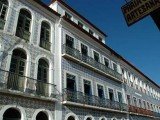
A visit to the Museum of Visual Arts is worth a lesson on European tiles, whose presence is striking in the capital of Maranhão.
Most of the tiles on display on the second floor, dating from the 18th and 19th centuries, are blue and white in color and come from Portugal.
But there are also tiles from France, Germany and England. On the second and third floors are works by artists from Maranhão and other origins, such as Cícero Dias, Tarsila do Amaral and Alfredo Volpi.
The third floor offers a beautiful view of the historic center, the bay of São Marcos and the Praia Grande Market. R. Portugal, 273, Praia Grande.
20. CAFUA DAS MERCÊS
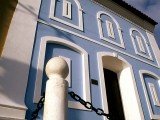
The site of the city’s former slave market has become the Museu do Negro, dedicated to the preservation of Afro-Brazilian memory and culture.
Its collection includes images, musical instruments, clothes and items used in festive or religious rituals. In the inner courtyard of the sobrado there is a replica of a pillory. R. Jacinto IHaia, s/n, Desterro.
21. and 22. PRAIA GRANDE MARKET AND CRAFT CENTER
Throughout the old part of the city, tourists come across stores selling typical products of Maranhão, especially drinks, sweets and handicrafts.
One of these places is the Praia Grande Market (Rua da Estrela, s/n, Historic Center), built in 1820 and installed within the Casa das Tulhas complex.
Here you’ll find tiquira – manioc cachaça – and all kinds of grains and spices, which gives it an unmistakable perfume; old men meet there to play cards and dominoes. On Friday nights, the market is packed with visitors.
Another spot is the Ceprama Handicraft Center, which sells painted tiles, lace, and wood and fiber pieces produced throughout the state (1232 São Pantaleão Street, Madre de Deus).
23. History of João Lisboa Square in São Luís do Maranhão
24. Research Center of Natural History and Archaeology of Maranhão
25. Rua do Giz in São Luís do Maranhão – History and Architecture
26. Church of São José do Desterro in São Luís do Maranhão – History
27. Cine Eden in São Luís do Maranhão
AFRO-BRASILIAN CULTURES
After Bahia, Maranhão is the Brazilian state in which religions of African origin have the greatest representation.
One of its strongest manifestations is the tambor-de-mina, in many points similar to the candomblé of Bahia and the xangô of Pernambuco, but based on a particular mythology.
The rites and touches vary from one terreiro to another, but are always marked by the trance of the participants, who show themselves to be incorporated by supernatural entities.
The orixás, related to nature, take on the traits of characters known to the people of Maranhão, such as King Sebastião, a resident of the island of Lençóis, who would have built a castle at the bottom of the sea for his beloved, Princess Ina.
The largest and most traditional terreiro is Casa das Minas (Rua de São Pantaleão, 857, Centro), built in the 19th century. In addition, the Casa Fanti-Ashanti (Rua Militar, 1158, Cruzeiro do Anil) stands out.
BUMBA-MEU-BOI
Maranhão is the state that most enthusiastically celebrates the bumba-meu-boi.
The tradition, linked to the June festivals and whose origin goes back to the games of the slaves who worked in livestock, mixes African, Portuguese and indigenous influences and merges, in the same rite, theater, music and dance.
It all begins with the story of Catirina, a farm slave who, pregnant, wants to eat an ox’s tongue – but not just any ox, but her master’s favorite.
To this end, Catirina summons her husband – Pai Francisco, or Nego Chico, or Preto Velho – to kill the animal and bring her the delicacy.
The man obeys; discovered by his boss, he is ordered to resurrect the ox if he does not want to die. A shaman helps him in the endeavor: “Get up, ox; dance, ox”, he calls. The animal finally rises and dances away.
Preparations for the festival begin in January, but it is in May that rehearsals take place.
On June 23, the eve of St. John’s Day, the ox is baptized by a priest – outside the church. The presentation of its hide to the community – adorned with velvet, satin, beads and sequins – is the starting point for the dances.
The game has several “accents”, that is, rhythms – such as matraca (of indigenous influence), zabumba (in which African traits predominate) and orchestra (with European influence).
Among other important folkloric manifestations in the state, it is worth mentioning the Divino Espírito Santo festival, the tambor-de-crioula, the coconut dance, the stone dance and the São-gonçalo dance.
REGGAE AND RADIOLAS
In the mid-1970s, Jamaican reggae arrived in the capital of Maranhão to stay.
In addition to its constant presence on radio and TV programs, the rhythm permeates the city’s daily life mainly thanks to the radiolas – a kind of traveling DJ studios, whose huge equipment spreads the sound of Bob Marley, Peter Tosh and other classics of the genre.
In 2005, more than fifty radiolas animated São Luís with the “stones”, that is, the good reggae songs of the 1970s.
To supply their repertoires, the owners of the radiolas commission recordings from Brazilian singers, who go by the names Dub Brown, Henry Murvin and Ronnie Green.
For the international scene, Maranhão exports, among others, Célia Sampaio and the band Tribo de Jah.
Radiolas sell CDS, but if the idea is to dance the rhythm outside the house – either alone, like the Jamaican idols, or in the forró way, preferred by the Maranhenses – there are plenty of options: the Roots Bar brings together the most authentic “regueiros” and the most excellent dancers (Rua da Palma, 85, Centro).
Nelson’s Bar is frequented by the city’s middle and upper classes (Av. Litorânea, s/n, Calhau beach).
Bar do Porto is a favorite among tourists (Rua do Trapiche, Centro Histórico).
Bar do Léo, which plays, in addition to reggae, Brazilian music, often presents the Maranhenses Zeca Baleiro and Rita Ribeiro (Mercado de Vinhaes, s / n, Center).
São Luís do Maranhão Tourism and Travel Guide in the Northeast



















